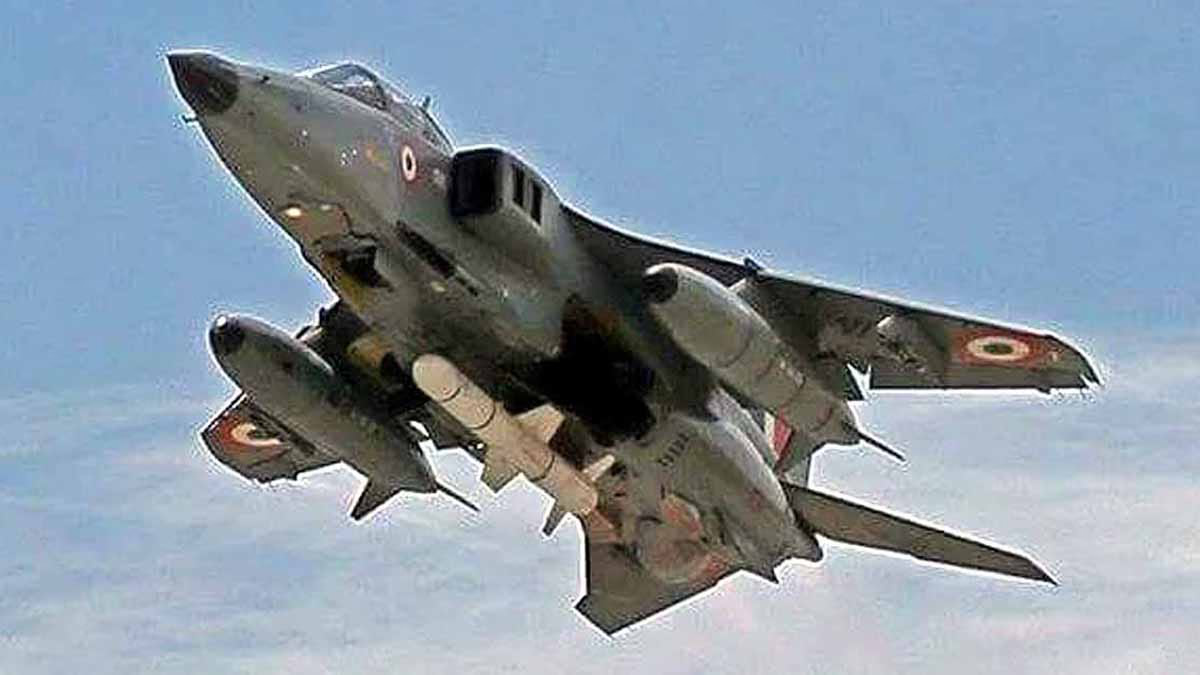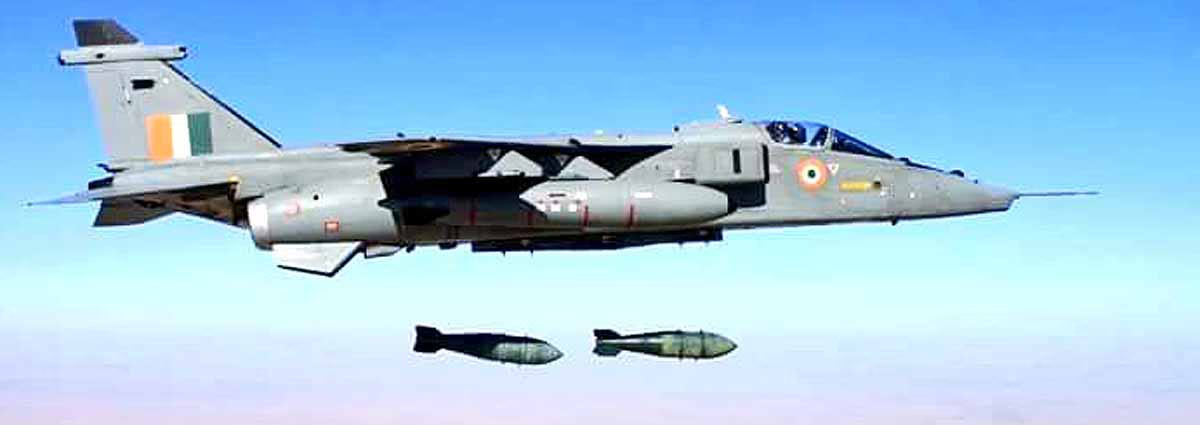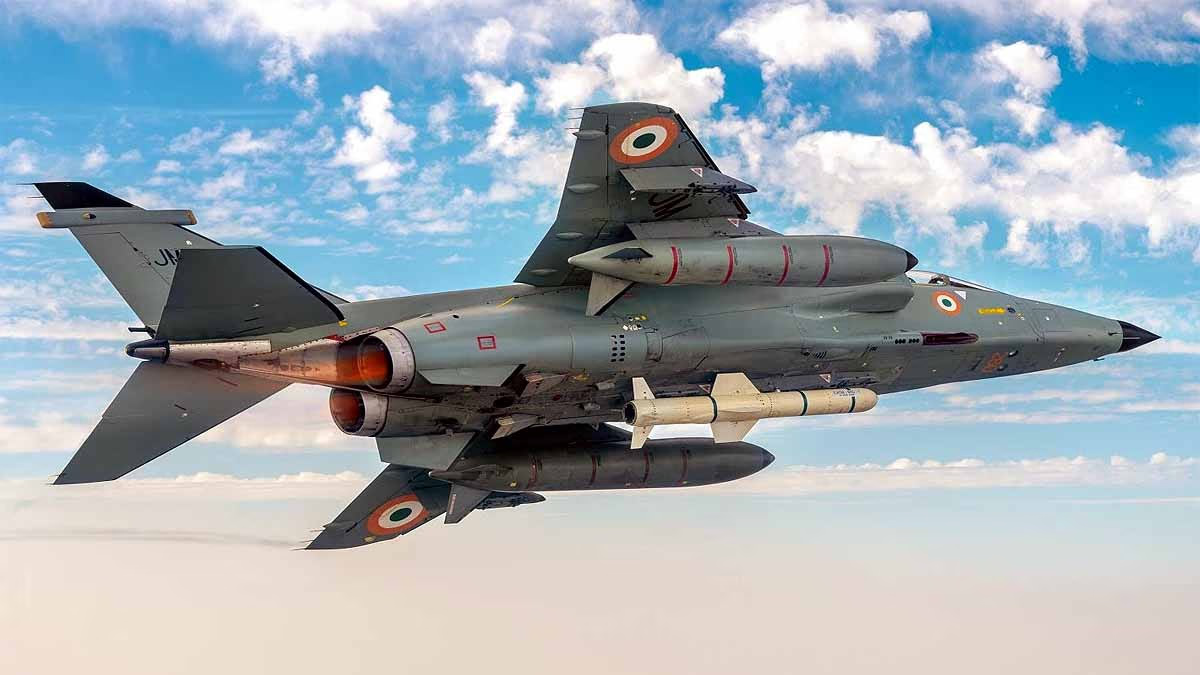On July 9, 2025, an Indian Air Force Jaguar fighter jet crashed in Churu district, Rajasthan. The incident occurred in Bhanuda village of Ratangarh Tehsil, where at approximately 1:25 PM, the aircraft became a fireball before crashing into a field. This Jaguar was a twin-seater aircraft that had embarked on a mission from the Suratgarh Air Force Base. The current state of the pilots remains unknown, but rescue operations are underway.
Details of the Incident
The Jaguar fighter jet is a crucial combat aircraft for the Indian Air Force, conducting regular flights from the Suratgarh Air Force Base. According to defense sources, the aircraft crashed near Bhanuda village in the Ratangarh area of Churu district. Eyewitnesses reported that the aircraft abruptly lost balance in the air, becoming a ball of fire before it rapidly descended, cloaking the area in smoke and causing panic among local residents.

Source: aajtak
Location: Churu District, Ratangarh Tehsil, Bhanuda Village
Time: July 9, 2025, approximately 1:25 PM
Aircraft: Jaguar, twin-seater (with two pilots)
Base: Suratgarh Air Force Base, Rajasthan
What is the Jaguar Aircraft?
The Jaguar is a fighter aircraft developed jointly by Britain and France in the 1970s and has been in use by the Indian Air Force since 1979. It is renowned for its ground attack capabilities and aerial defense.
Features: It's a twin-seater aircraft enabling two pilots. It can reach speeds of 1,700 km/hr and is capable of carrying weaponry.
Role in the Indian Air Force: Jaguars are used for deep penetration strike and reconnaissance missions.
Suratgarh Base: Situated in Rajasthan, Suratgarh is a significant base for the Indian Air Force, deploying Jaguars and other aircraft.
History of Crashes
This marks the third Jaguar aircraft crash this year, raising concerns. Previously...
April 2025:
A Jaguar crashed near Suvarda village close to Jamnagar, Gujarat. In that incident, one of the two pilots tragically lost their life, while the other successfully ejected. This accident happened during a nighttime training mission.
March 2025:
After taking off from the Ambala Airbase in Haryana, another Jaguar met with a crash, though the pilot managed to eject safely.
Technical malfunctions are often cited as the cause of these crashes. The same might be true for the Churu incident, though investigations are yet to commence.

Source: aajtak
Cause and Investigation of the Crash
The precise cause of the crash remains undetermined. The Indian Air Force has initiated an investigation. Potential reasons could include...
Technical Failure: As the Jaguars have aged, maintenance challenges have emerged frequently.
Pilot Error: Although unlikely, considering the advanced training received by Indian Air Force pilots, it remains a possibility.
External Factors: Bird strikes or poor weather conditions could also be responsible.
Teams from the Air Force and the Ministry of Defense will analyze the debris. The black box (flight data recorder) will be scrutinized. Only post-analysis will the exact cause of the crash be revealed.
An Indian Air Force Challenge
Despite their significance, repeated Jaguar crashes have raised alarms within the Indian Air Force. Over 40 years old, there are ongoing efforts to modernize these aircraft. The Indian Air Force now focuses more on newer aircraft like Rafale and indigenous Tejas, yet Jaguars remain essential for various missions.
Let's delve into its power...
The SEPECAT Jaguar (also known simply as Jaguar) was previously employed by the British and French air forces and continues to serve the Indian Air Force. From 1968 to 1981, a total of 573 Jaguar fighter jets were produced worldwide.
The Indian Air Force holds 160 Jaguar aircraft, 30 of which are for training. Ground attack is its primary role, and it is manufactured in India by Hindustan Aeronautics Limited. The aircraft comes in several variants; some require a single pilot, while others a team of two.
At 36,000 feet, 1700 km/hr speed
This 55.3 feet long aircraft has a wingspan of 28.6 feet and a height of 16.1 feet. Upon takeoff, its maximum weight is 15,700 kilograms with two Rolls Royce Turbomeca Adour Mk.102 engines installed. It contains 4,200 liters of fuel, expandable with 1,200-liter drop tanks.
It can achieve a maximum speed of 1,350 km/hr close to the sea surface and 1,700 km/hr at an altitude of 36,000 feet. With full fuel tanks, it covers a range of 1,902 kilometers.
Maximum altitude of 46,000 feet
The Jaguar can ascend to a maximum altitude of 46,000 feet, reaching 30,000 feet in just one and a half minutes. Its notable capability includes taking off and landing on short 600-meter runways.
Weaponry at seven locations
Equipped with two 30mm cannons capable of firing 150 rounds per minute, the aircraft has a total of seven hardpoints: four underwing, two overwing, and a center-line hardpoint. It can carry weapons weighing up to 4,500 kilograms.
It includes eight Matra rocket pods armed with 68mm 18 SNEB rockets, one anti-radar missile, two air-to-air AIM-9 Sidewinder missiles, RudraM-1 anti-radiation missile, Harpoon anti-ship missiles, Sea Eagle anti-ship missiles, precision-guided munitions, various types of guided or unguided bombs, and nuclear bombs.




